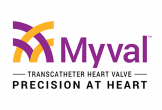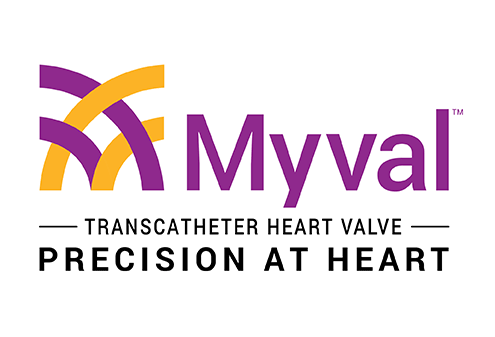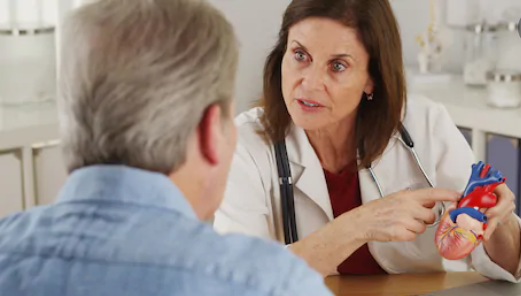Overview: Heart valve surgery & Aortic valve
Heart valve surgery is done to replace or repair heart valves that aren’t working properly. Most valve replacements involve the aortic and mitral valves. Aortic valve separates the left ventricle (your heart’s main pumping chamber) and the aorta (the major artery that carries blood to your body from the heart). The mitral valve separates the left atrium from the left ventricle.
Heart valves and Cardiac Cycle
Heart is a muscular organ that pumps blood through the body. It consists of four chambers the upper chambers are the right and left atria the lower chambers are the right and left ventricles the right and left atria connect to their respective ventricles.
The right ventricle connects to the pulmonary artery and the left ventricle to the aorta valves are located at these connections to ensure that blood moves in only one direction the parts of a valve that open and close are flaps of tissue called cusps. The aortic valve is located between the left ventricle and the aorta. When the heart contracts the aortic valve opens and blood is pumped into the aorta.
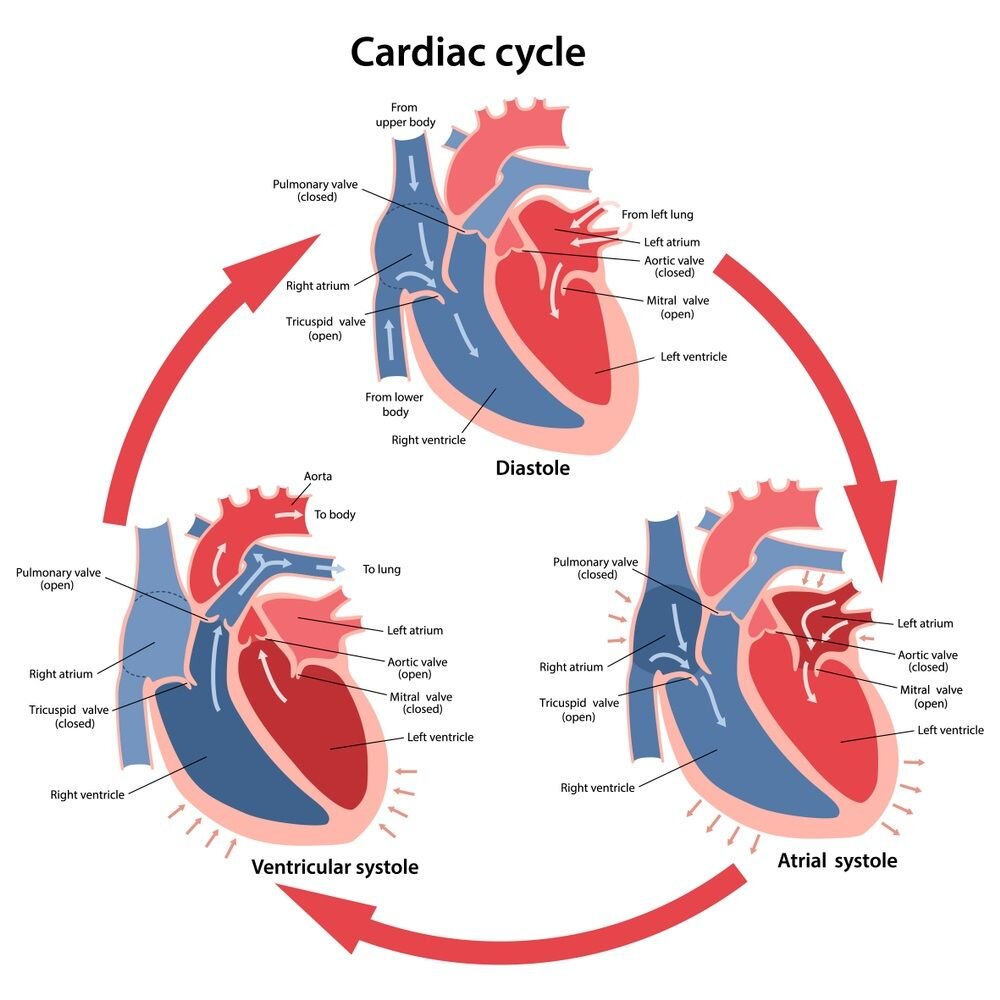
In general, the flow of blood during a heart cycle follows this pathway: From the body » right atrium » tricuspid valve » right ventricle » pulmonary valve » lungs » left atrium » mitral valve » left ventricle » aortic valve » body
What are the types of heart valve problems?
1. Stenosis- A narrowing or stiffening of the valve that prevents enough blood from flowing through.
2. Regurgitation -valves don’t close properly and allow blood to flow backward where it shouldn’t.
3. Prolapse– the valve leaflets (or flaps) don’t close properly causing a small leak.
4. Atresia– the valve is not properly formed or is missing from birth.
What is heart valve disease? What is the main cause of aortic valve stenosis?
Heart valve disease occurs when one or more of the heart valves do not work correctly because of valvular stenosis or valvular insufficiency. These conditions cause the heart to pump harder to circulate the right amount of blood through the body.
- Aortic Valve Insufficiency (also called Aortic valve regurgitation) – Sometimes the valve leaflets become damaged and fail to close completely. When this happens, some of the blood can leak backwards instead of going forward. This valve condition impairs the heart’s ability to pump the necessary amount of blood to the rest of the body.
- Aortic Valve Stenosis– Over time, calcium deposits can collect around your normal valve, causing a narrowing of the valve opening. When the valve narrows, the heart doesn’t pump as well, which can cause several problems. For instance, if the mitral valve is narrow, less blood is able to fill the ventricle when the left atrium contracts. This limits the amount of blood pumped out to the body.
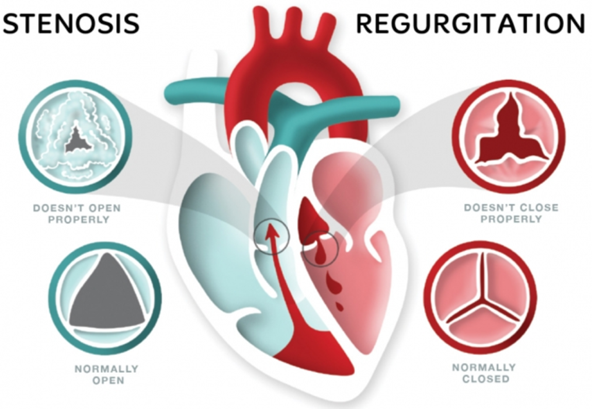
The main causes of aortic stenosis (AS) are
- congenital stenosis
- aortic valve calcification
- bicuspid or tricuspid stenosis
- degenerative rheumatic fever and Rheumatic fever is often associated with mitral valve disease.
What causes heart valve disease?
When the heart relaxes it closes to prevent blood from leaking back into the left ventricle. A normal aortic valve has three smooth cusps that open widely and close tightly. Your aortic valve may be leaky or narrowed causing your heart to work harder and disrupt your blood flow.
A leaky valve does not close all the way causing blood to leak back into the ventricle between each heartbeat this condition is called aortic regurgitation.
A narrowed aortic valve does not open all the way which restricts the amount of blood passing out of the ventricle into the aorta this condition is called aortic stenosis you may have been born with an abnormal. For example. your aortic valve may only have two cusps instead of three so it may not open and close properly your aorta valve may have become damaged during your lifetime a condition called acquired a or Heart valve disease.
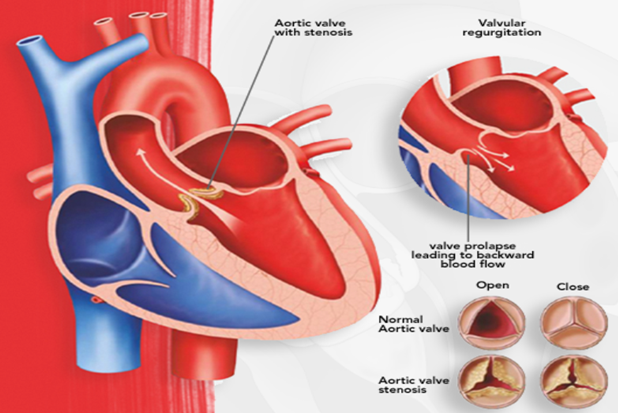
Valve disease occurs when the heart valves do not work correctly. Valve disease can be congenital (present at birth) or acquired later in life. Common causes of acquired valve disease include infection (including rheumatic fever and infective endocarditis) and structural changes that occur over time.
Congenital aortic valve disease
- Congenital defects. A heart defect present at birth that’s not repaired may get worse later in life and cause problems. Patients with bicuspid aortic valves are born with them and are present in about 1 – 2 percent of the population. Instead of the normal three leaflets or cusps, the bicuspid aortic valve has only two. Without the third leaflet, the valve opening may not close completely and leak (regurgitant) or not open completely and become narrowed (stenotic) or leak. About 25 percent of patients with bicuspid aortic valves may have some enlargement of the aorta above the valve. If it is greatly dilated, the aorta is known as being aneurismal.
- Aging and age-related valve disease. Heart valves can weaken or harden as you get older. Childhood cancer survivors who had radiation therapy are at greater risk of valve disease later in life.
- Illnesses and conditions. Certain heart conditions including infective endocarditis, rheumatic fever, heart attack, poorly controlled high blood pressure and heart failure can scar or damage a valve.
Acquired aortic valve disease
- Acquired valve diseases include problems that develop with valves that were once normal. Acquired valve diseases include infection, such as infective endocarditis and rheumatic fever, and structural valve changes, such as stretching or tearing of the chordae tendineae or papillary muscles, fibro-calcific degeneration or dilatation of the valve annulus. Sometimes the cause of acquired valve disease is unknown.
- Structural valve diseases- include stretching or tearing of the chordae tendineae or papillary muscles, fibro-calcific degeneration or dilatation of the valve annulus.
- Rheumatic fever is a common cause of heart valve injury requiring surgery in adults. People of any age can contract rheumatic fever, but it’s most common in children between the ages of five years and fifteen years. It is caused by bacteria known as streptococcus and is usually related to a severe type of sore throat sometimes called a “strep throat.” Causes include rheumatic fever which can be a complication of untreated strep throat.
- Endocarditis -Bacterial and fungal infections are an-other threat to both the heart and the heart valves. In many cases, the exact reason for the infection is unknown which is a bacterial infection of the valve and sclerosis or hardening of the aortic leafless.
During a dental procedure, for example, bacteria may gain access to the blood-stream. Antibiotics should be given before a dental procedure to those who have a diseased or artificial heart valve to help prevent infectious endocarditis, or infection of the heart muscle.
What is Heart failure & its Common Symptoms
After a period of time a faulty aortic valve can cause the heart muscles to become enlarged and weakened. Depending on the nature of the valves defect the walls of the left ventricle may become abnormally thick or thin and the problem can eventually affect the right side of the heart as well patients with this condition known as heart failure.
Symptoms of heart failure
A Patient may experience shortness of breath chest pain or angina pectoris, dizziness, light headedness and or fainting, swelling of the ankle’s feet, legs and fatigue.
If you have this symptom speak to your doctor today
If the heart valve cannot be repaired, Doctor (physicians) will most likely recommend you heart valve replacement with either a mechanical heart valve or a tissue (biological) heart valve.
What is Aortic heart valve replacement?
Aortic valve replacement: In this procedure, your diseased aortic valve will be replaced with the mechanical valves made of metal or with valve tissue from pigs, cows or human donors using traditional open-heart surgery or Transcatheter Aortic Valve Replacement (TAVR).

Read More: About Aortic heart valve replacement treatment and procedure
Which is right for me Aortic heart valve replacement or repair?
- The decision to repair or replace a damaged aortic valve depends on many things, including:
- The severity of your aortic valve disease
- Your age and overall health
Whether you need heart surgery to correct another heart problem in addition to aortic valve disease, such as heart bypass surgery to treat coronary artery disease, so both conditions can be treated at once.
Different Types of Aortic heart Valve Replacement
Surgical option- Open heart procedure– Surgical aortic valve replacement (SAVR) is traditional, open-chest surgery, which has been practiced for more than 50 years to replace damaged or diseased aortic valves. SAVR is generally indicated for patients who are at low risk for open-chest surgery, meaning the patient is well and strong enough to undergo this type of surgery and recovery.
Non-Surgical option- TAVR
Aortic valve replacement: In this procedure, your diseased aortic valve will be replaced with the mechanical valves made of metal or with valve tissue from pigs, cows or human donors using traditional open-heart surgery or Transcatheter Aortic Valve Replacement (TAVR).Undergoing a TAVR is a better treatment option as it is a minimally invasive procedure involves placement of a new valve over the patient’s diseased valve via a catheter.
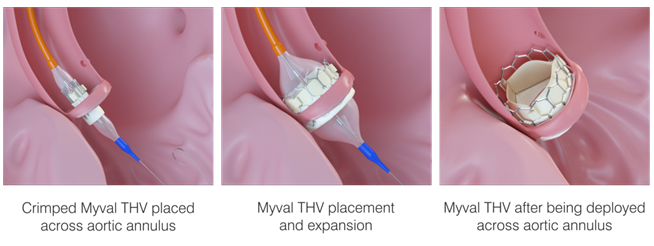
Aortic heart valve repair
Balloon/surgical valvuplasty (BAV): It is a less invasive procedure because it is done by inserting a long flexible tube with a deflated balloon on its tip into the blood vessel from the groin. When the tip reaches the valve, the balloon is inflated which helps to open up the stenotic or stiffed heart valves and increase the blood flow through the heart.
Aortic heart valve replacement recovery time- TAVR
Heart valve replacement tavr recovery time: Patients who undergo the TAVR procedure typically experience less down time, faster recovery and a shorter hospital stay (3 to 5 days on average) than SAVR.
Post Procedure Activity:
- Avoid lifting heavy objects, excess bending, stretches, push or pull activities for two weeks.
- Walking: Begin by trying to walk for 5 minutes daily after discharge. Then, gradually increase the duration as per your convenience. Ask someone to accompany you during the first few walks.
- Sit-to-stand Exercise: Try performing 10 sit-to-stand repetitions daily without hand assistance. Increase to performing this activity 2-3 times per day.
- It is all-right to slowly climb stairs.
- If your TAVR was performed through the groin without any incision, you can drive after 5 days.
- Avoid sexual activity until a follow up appointment with your cardiologist.
- Your doctor will provide a time frame for when you can return to work.
Read more: about Benefits of Myval Transcatheter Aortic Valve Replacement (TAVR)

Success rate of Aortic heart valve replacement- Myval THV
Myval THV – TAVR – This procedure helps relieve the signs and symptoms of aortic valve stenosis and can also greatly improve the chance of survival in people who are displaying severe symptoms. Based on the 30-day primary outcome data, these are the observable benefits of using Myval in patients.
In 100 intermediate and high-risk patients of MyVal-1 FiH study, Myval THV system demonstrated excellent clinical and hemodynamic outcomes at 6-month:
- 91% survival & low incidence of stroke (2%)
- Low 2% rate of new permanent pacemaker implantation post-procedure
- High procedural success due to precise orthotopic valve positioning
- Significant improvement in quality of life of patients at 6-month follow-up
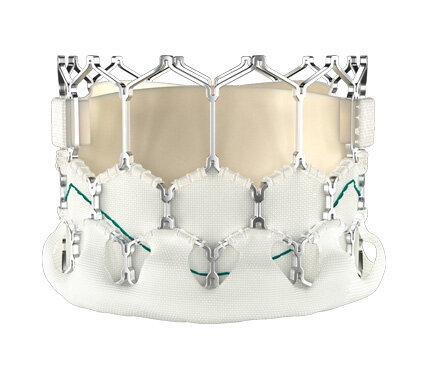
What are the complications in Aortic heart valve replacement treatment
Following are the complication and possible problems
- Infection – there’s a risk of wound infections, lung infections, bladder infections and heart valve infections (endocarditis). You may be given antibiotics to reduce this risk.
- Excessive bleeding – tubes may be inserted into your chest to drain the blood, and sometimes another operation is needed to stop the bleeding.
- Blood clots – this is more likely if you have had mechanical valve replacement. You’ll be prescribed anticoagulant medication if you’re at risk.
- Stroke or transient ischaemic attack (TIA) – where the supply of blood to the brain becomes blocked.
- The valve may wear out – this is more likely in people who have had a biological valve replacement for a long time.
- Irregular heartbeat (arrhythmia) – this affects around 25% of people after an aortic valve replacement and usually passes with time. But 1 to 2% of people will need to have a pacemaker fitted to control their heartbeat.
- Kidney problems – in up to 5% of people, the kidneys don’t work as well as they should for the first few days after surgery. In a few cases, temporary dialysis may be needed.
Reference
- https://www.mayoclinic.org/tests-procedures/aortic-valve-repair-aortic-valve-replacement/about/pac-2038509
- https://www.heartfoundation.org.nz/your-heart/heart-conditions/heart-valve-disease
- https://www.heart.org/en/health-topics/heart-valve-problems-and-disease/heart-valve-problems-and-causes/problem-heart-valve-stenosis
- https://www.webmd.com/heart-disease/aortic-valve-replacement-surgery
- https://www.mayoclinic.org/tests-procedures/aortic-valve-repair-aortic-valve-replacement/about/pac-2038509
- https://www.ncbi.nlm.nih.gov/books/nbk537136/
- http://www.clevelandclinic.org/sem_info/heartcenter/valve_disease/img/ccf_valve_disease_guide.pdf
- https://www.heart.org/-/media/data-import/downloadables/3/6/b/pe-abh-what-is-heart-valve-surgery-ucm_300441.pdf
- https://medlineplus.gov/ency/article/007407.htm
- https://my.clevelandclinic.org/health/treatments/16745-aortic-valve-surgery/procedure-details
